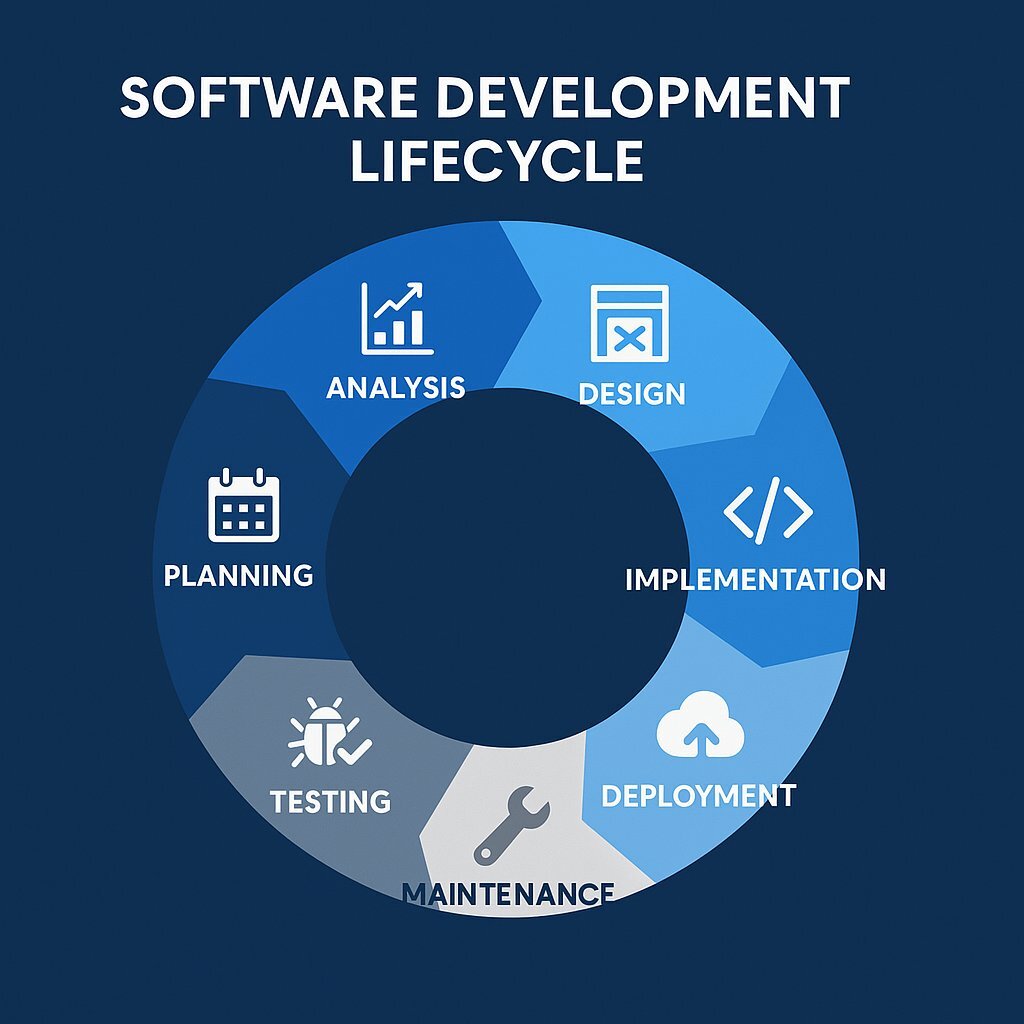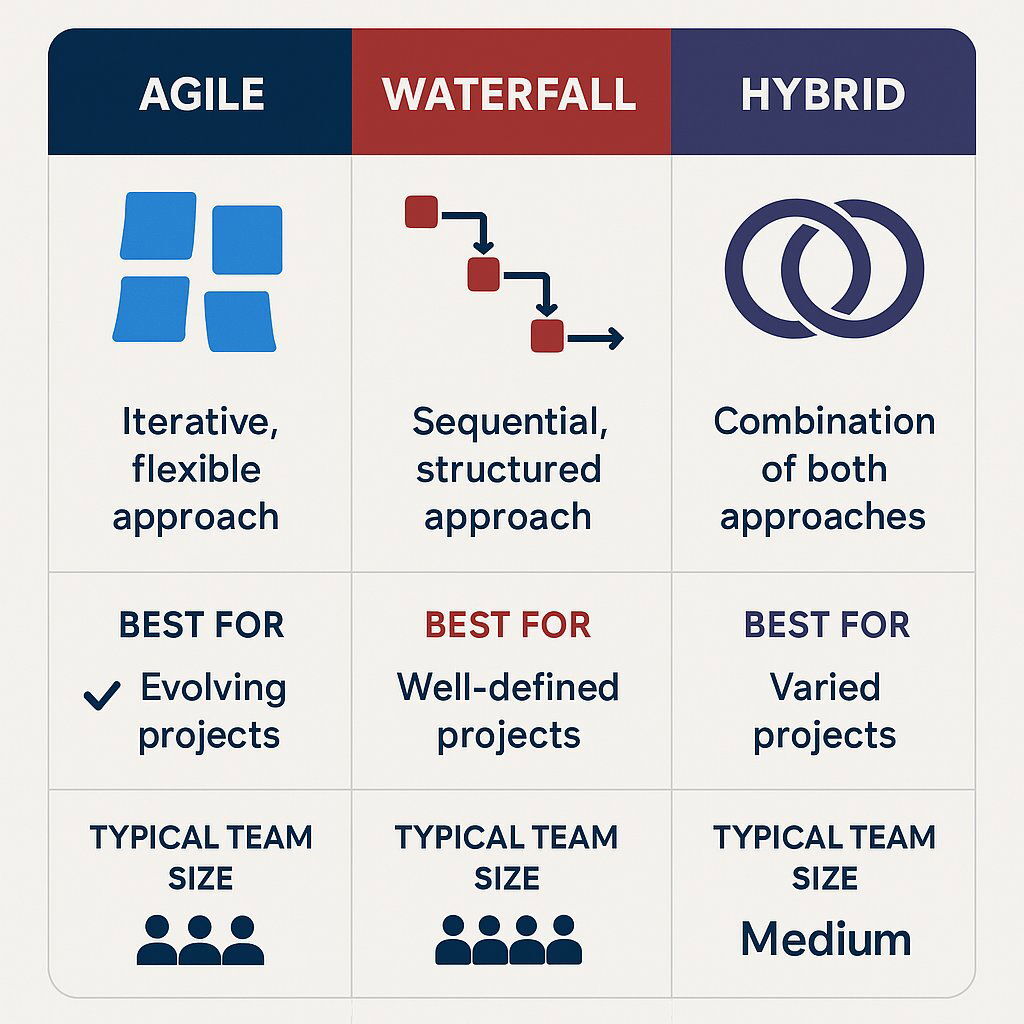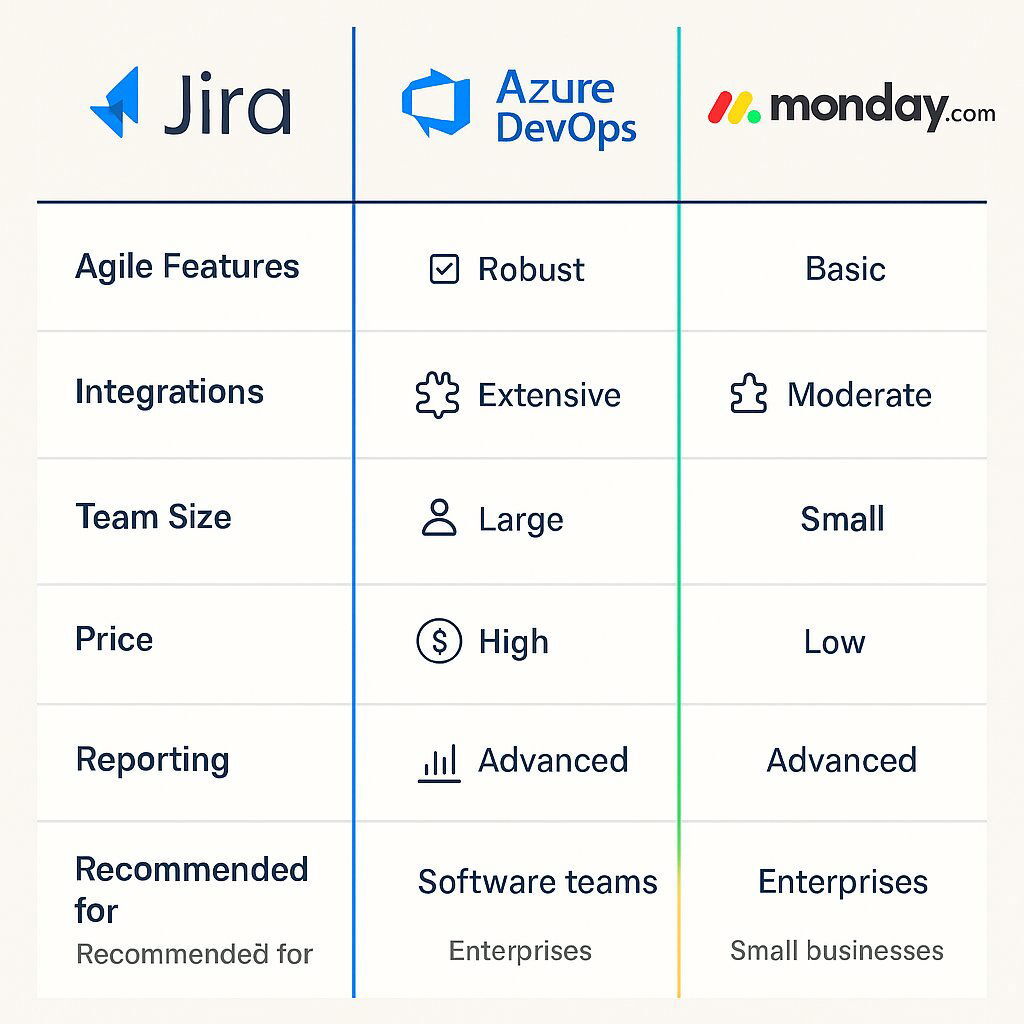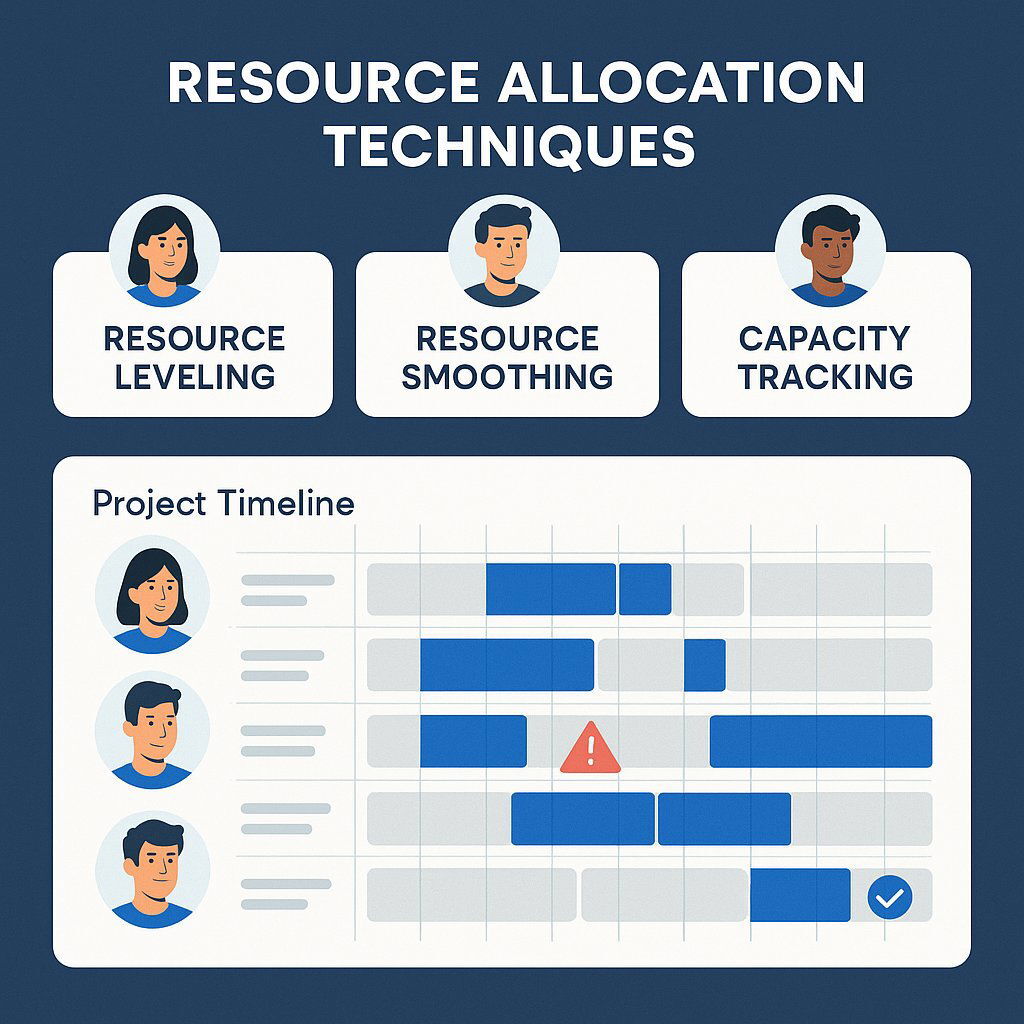
Successful Software Project Management Tips
November 03, 2025 / Bryan ReynoldsSoftware Management Project: Complete Guide to Planning, Executing and Delivering Software Projects
Introduction
Software management project means the systematic coordination of resources, timelines and teams to deliver software applications from concept to deployment and maintenance. This discipline combines technical expertise with proven project management principles to navigate the unique complexities of software development where requirements change rapidly and technical challenges emerge during the development process.
Modern software project managers face a big challenge: industry data shows that around 70% of software projects fail to meet their original scope, timeline or budget without proper management frameworks in place.
What This Guide Covers
This guide covers project planning frameworks, methodology selection, team management strategies and risk mitigation techniques for software development projects including web applications, mobile apps and enterprise software systems. We focus on software project management not hardware projects or general business management principles.
At the end of this guide you’ll also be able to evaluate the best project management software and compare leading project management solutions to find the right one for your needs.
Who This Is For
This guide is for software project managers, development team leads, IT managers and professionals transitioning into software project management roles. Whether you’re managing your first development team or scaling project management across multiple software development teams you’ll find practical strategies to improve project outcomes.
Why This Matters
Effective software project management saves projects by 30% and delivers 25% faster according to recent industry research. The pace of technological change and complexity of software systems makes structured project management essential for software development success.
What You’ll Learn:
- Core software project management principles and how they integrate with development lifecycles
- How to choose between Agile, Waterfall and hybrid methodologies based on project requirements
- Implementation strategies for team coordination and stakeholder management
- Solutions to common problems like scope creep, technical debt and remote collaboration
What is Software Project Management
Software project management is the discipline that applies project management principles to software development contexts, combining technical knowledge with traditional project coordination to deliver functional software products within defined constraints. A good project management tool is essential to organize project tasks and develop a project plan. Software project managers coordinate scope definition, timeline management, resource allocation, quality assurance and stakeholder communication throughout the software development project lifecycle. This role requires understanding of technical aspects of software engineering and business requirements that drive project goals. The software planning process is a key part of setting up a successful software management project.
Software projects are very different from traditional project management scenarios due to their iterative development cycles, changing requirements, technical complexity and the rapid evolution of underlying technologies that can impact project direction.

Software Development Lifecycle (SDLC) Integration
The Software Development Lifecycle has distinct phases: planning, analysis, design, implementation, testing, deployment and maintenance. Each phase produces specific deliverables that are project milestones. Tools like Gantt charts and multiple project views—Gantt, Kanban, List, Sheet, Calendar—can be used to visualize project timelines, track task dependencies and monitor progress across SDLC phases.
This ties to software project management because SDLC phases provide the framework for project timeline development, resource allocation decisions and quality control checkpoints. Project managers use SDLC phase transitions to measure project performance and adjust resource management.
Stakeholder Management in Software Projects
Key stakeholders in software projects are product owners who define requirements, development teams who build the solution, QA teams who ensure quality, end users who provide feedback and business sponsors who fund the initiative. Implementing structured team feedback mechanisms—regular meetings, surveys, opportunities for anonymous input—ensures all perspectives are considered during project development.
Building on SDLC integration, stakeholder alignment directly impacts project success by ensuring requirement clarity, reducing miscommunication that leads to rework and maintaining project scope control throughout development cycles.
Transition: Understanding these basics allows you to choose the right project management methodology for your project and organization.
Roles and Responsibilities in Software Project Management
Software project management relies on clearly defined roles and responsibilities within the project team. At the center of this is the software project manager who oversees the entire project lifecycle—from planning and project scope definition to execution, delivery and post-launch support. The software project manager is responsible for setting project goals, aligning them with business objectives and ensuring all project management tasks are executed efficiently. A good software project manager combines leadership skills with technical knowledge and communication skills. This role involves managing software development teams, stakeholder expectations, resources and progress to keep the project on track. The project manager must also facilitate team collaboration, resolve conflicts and adapt to changing project requirements.
Beyond the project manager the project team typically includes software developers, quality assurance engineers, UI/UX designers, technical writers and other specialists. Each team member has specific responsibilities—developers focus on coding and implementation, QA engineers handle testing and quality control and technical writers ensure comprehensive documentation. The software project manager must ensure every team member knows their role and how their part contributes to the overall project goals.
By creating an environment of accountability and clear communication software project managers enable development teams to work together, address challenges proactively and deliver successful software projects that meet or exceed stakeholder expectations.
Project Management Methodologies for Software Development
Choosing the right project management methodology depends on project complexity, team size, requirement stability and organizational culture, each approach is suitable for different software development scenarios. For complex projects involving multiple departments or interconnected tasks specialized methodologies and portfolio management strategies may be needed to coordinate and oversee multiple initiatives.

Agile Methodology Implementation
Agile project management involves iterative development cycles of 2-4 weeks, continuous customer collaboration, adaptive response to changing requirements and early delivery of working software components. Agile methodologies ensure managing software projects stays close to business goals, so teams can adapt quickly and deliver value that supports organizational objectives.
Sprint planning defines work for the next iteration, daily standups maintain team coordination, sprint retrospectives drive continuous improvement and demo sessions provide stakeholder feedback loops. This works best for projects with changing requirements, innovative product development and development teams under 10 members.
Agile works well when project scope changes based on user feedback, market conditions or emerging technical opportunities that weren’t apparent during initial project planning.
Waterfall Approach for Software Projects
Waterfall methodology follows sequential phase execution: comprehensive requirements gathering, detailed system design, full implementation, systematic testing, production deployment and ongoing maintenance planning. Unlike Agile’s iterative cycles, Waterfall emphasizes linear progression through phases, comprehensive documentation at each stage and fixed requirements established during project initiation. Clearly defining the project’s scope and documenting assigned tasks is critical for Waterfall project success. This works best for regulated industries with compliance requirements, projects with well defined and stable requirements, large enterprise systems integration and environments where extensive documentation is mandatory.
Hybrid and Scaled Methodologies
SAFe (Scaled Agile Framework) addresses enterprise environments with 50+ team members by combining Agile principles with coordination mechanisms needed for large software development projects.
DevOps integration incorporates continuous integration and continuous deployment (CI/CD) pipeline management into project workflows, while Kanban provides workflow visualization and work-in-progress limitation for teams managing multiple concurrent tasks. Hybrid and scaled methodologies often require detailed tracking of human resources and automation of recurring tasks to maintain efficiency.
Key Points:
- Agile for dynamic requirements and smaller teams
- Waterfall for stable requirements and compliance needs
- Hybrid for scaling Agile to enterprise environments
Transition: With methodology selected, implementation requires specific strategies for project initiation and tool selection that support chosen approach.
Implementation Strategy and Best Practices
Methodology implementation requires systematic project initiation process and careful tool selection that supports team collaboration and progress tracking throughout the development process. Effective time management, robust file sharing and advanced collaboration features are essential for team communication, coordination and overall project success.
Step-by-Step: Software Project Initiation Process
When to use this: Use this process for any software development project regardless of size, methodology choice or technical complexity.
- Stakeholder Interviews and Requirements Gathering: Conduct structured interviews with all key stakeholders over 2-4 weeks, document functional requirements, technical constraints and success criteria using user stories or traditional requirement specifications.
- Technical Feasibility Assessment and Architecture Planning: Evaluate proposed solution against existing infrastructure, identify technical risks and establish high level system architecture that supports scalability and maintenance requirements.
- Resource Allocation and Team Composition: Determine required roles including developers, QA engineers, UI/UX designers and DevOps specialists then assign tasks based on individual expertise and team capacity constraints.
- Timeline Estimation Using Structured Techniques: Apply story point estimation, planning poker sessions or expert judgment techniques to create realistic project timelines that take into account technical complexity and resource availability.
- Risk Assessment and Mitigation Strategy Development: Identify technical, resource and external risks then develop specific mitigation plans with assigned owners and trigger criteria for implementation.
A thorough initiation process increases the chances of project success and enables post-project review for continuous improvement.
Project Management Tools Selection

| Feature | Jira | Azure DevOps | Monday.com |
|---|---|---|---|
| Agile Support | Advanced sprint planning, backlog management | Built-in boards, sprint tracking | Visual sprint boards, customizable workflows |
| Integration | 3000+ plugins, developer tools | Microsoft ecosystem, seamless Office integration | 40+ integrations, Zapier connectivity |
| Team Size | Unlimited, scales to enterprise | Unlimited, enterprise-grade | 2-200+ users per account |
| Pricing | $7-14/user/month | $6/user/month | $8-16/user/month |
| Reporting | Advanced burndown, velocity charts | Built-in analytics, custom dashboards | Visual progress tracking, time reports |
When choosing project management software consider the importance of a user friendly interface which can simplify onboarding and daily use especially when importing data from platforms like Basecamp or Microsoft Project. Time tracking features are also essential for monitoring team productivity, managing remote or part-time workers and improving project planning and forecasting. Microsoft Project is also a strong alternative for teams that need robust task management and process automation.
Jira is for technical teams that need advanced Agile project management features, Azure DevOps for organizations within Microsoft environment that need integrated development tools and Monday.com for mixed technical and business teams that prefer visual project management interfaces.
Transition: Even with proper methodology and tool selection software projects will encounter predictable challenges that require specific solutions.
Resource Allocation for Software Projects
Resource allocation is the backbone of software project management and directly impacts project timeline, budget and quality. Software project managers must strategically allocate resources – people, technology and budget – so the software project runs smoothly and meets its objectives.

One common approach is resource leveling which involves distributing resources to avoid overloading team members and to create a realistic project timeline. This prevents bottlenecks and burnout and ensures steady progress throughout the software development project. Resource smoothing on the other hand focuses on optimizing resource usage to minimize fluctuations in workload and hence more consistent productivity across the project lifecycle. Agile methodologies introduce a dynamic approach to resource allocation. In frameworks like Scrum and Kanban resources are assigned in short iterations, project managers can monitor team capacity and adjust assignments as priorities change. This is especially valuable in software development where requirements can change rapidly.
To allocate resources effectively software project managers must assess the skills and availability of each team member, anticipate constraints and use project management tools to visualize and track resource allocation. By using these strategies project managers can optimize resource allocation, reduce delays and deliver successful projects.
Risk Management in Software Project Delivery
Risk management is an essential part of software project management, to ensure potential obstacles are identified, assessed and addressed before they can impact project success. Software project managers are responsible to develop a comprehensive risk management plan that covers the entire project lifecycle.
The risk management process starts with identifying potential risks – from technical risks like software bugs and integration issues to schedule risks like timeline slippage and resource shortages. Project managers must also consider external risks like changes in market conditions, evolving customer requirements and changes in regulatory environments.
Once risks are identified software project managers assess their likelihood and impact on the project. This assessment informs the development of mitigation strategies which may include contingency planning, resource reallocation or process adjustments. Assigning risk owners ensures accountability for monitoring and managing specific risks as the project progresses.
Continuous monitoring and regular risk reviews are essential to effective risk management. By proactively addressing risks and adapting strategies as needed software project managers can minimize disruptions, maintain project momentum and increase the chances of successful software project delivery.
Process Automation for Efficient Software Project Execution
Process automation is key to efficient software project execution, to reduce waste, increase productivity and deliver better results. Software project managers play a crucial role in analyzing the software development process, identifying inefficiencies and implementing improvements that optimize workflows.
One way to do this is to eliminate unnecessary steps and automate repetitive tasks using workflow automation tools like Zapier or IFTTT. Project management software like Asana, Trello and Jira provides powerful features to manage tasks, track progress and collaborate with team members – all in one place. These tools allow project managers to assign tasks, monitor deadlines and ensure everyone is aligned with project goals. Agile project management methodologies like Scrum and Kanban further streamline processes by promoting iterative development, continuous feedback and rapid adaptation to change. Implementing continuous integration and continuous deployment (CI/CD) pipelines automates the build, test and deploy stages reducing manual effort and speeding up delivery.
By using the right project management tools, workflow automation and agile methodologies software project managers can streamline processes, improve team efficiency and deliver better software project outcomes. Process optimization is key to staying competitive in today’s fast paced software development world.
Common Challenges and Solutions
Software project management involves navigating recurring obstacles that can derail timelines, blow budgets or compromise deliverable quality without proactive management strategies. Tracking software project management metrics and understanding key aspects of project execution is essential to overcome these challenges.

Challenge 1: Scope Creep and Changing Requirements
Solution: Implement a formal change control process that requires impact assessment documentation, stakeholder approval workflows and clear documentation of how changes affect timeline, budget and resource allocation.
Industry data shows that 80% of failed software projects cite scope creep as a major contributing factor while structured change management processes reduce uncontrolled scope growth by 40%.
Challenge 2: Technical Debt and Quality Management
Solution: Establish mandatory code review processes, implement automated testing in CI/CD workflows and dedicate 20% of each sprint capacity to technical debt reduction and code refactoring activities.
Technical debt accumulates at 5-10% per sprint without active management and can impact development velocity by 25-40% over 12 months, making proactive quality control essential for long term project success.
Challenge 3: Team Communication and Remote Collaboration
Solution: Implement structured daily standups, deploy asynchronous communication tools like Slack or Microsoft Teams and maintain shared documentation repositories using platforms like Confluence or Notion for knowledge management.
Remote software development teams experience 30% higher miscommunication rates compared to co-located teams but structured communication protocols reduce project delays by 20%.
Transition: Now you know these challenge patterns and solutions.
Conclusion and Next Steps
Software project management combines technical knowledge with traditional project coordination disciplines to navigate the unique complexities of software development where success depends on methodology alignment, proactive stakeholder engagement and systematic risk management throughout the project lifecycle. The key is to choose management approaches based on project characteristics not universal solutions and then implement consistent processes for communication, quality control and scope management.
Get started:
- Assess Current Project Management Maturity: Use PMI or Agile assessment frameworks to evaluate your current capabilities and identify areas for improvement in your development teams.
- Choose and Implement Methodology: Choose between Agile, Waterfall or hybrid approaches based on team size, project complexity, requirement stability and organizational culture.
- Establish Measurement Frameworks: Implement tracking systems for key metrics like development velocity, quality indicators and stakeholder satisfaction scores to enable continuous improvement.
Supporting References
- PMI — Best practices: the nine elements to success - Professional guidance from the Project Management Institute on core practices that drive successful outcomes.
- CIO — Project management: tips, tools, and best practices - Publisher (IDG/CIO) overview of practical techniques, tooling, and governance applicable to software projects.
- Project Leadership & Society (Elsevier) — Mitigating risk of failure in IT projects - Peer-reviewed analysis of failure causes and risk-mitigation mechanisms in IT initiatives.
- Systems (MDPI) — Uncertainty in software development projects: review of causes and effects - Open-access literature review connecting uncertainty, scope change, and project outcomes in software development.
Related: Consider DevOps for deployment automation, software architecture for technical decision making and technical leadership development to move project management into strategic technology leadership roles. When choosing tools to manage projects consider solutions that balance powerful features (e.g. a gantt chart for dependencies and timelines) with usability as some advanced tools may have a steep learning curve for new users.
About Baytech
At Baytech Consulting, we specialize in guiding businesses through this process, helping you build scalable, efficient, and high-performing software that evolves with your needs. Our MVP first approach helps our clients minimize upfront costs and maximize ROI. Ready to take the next step in your software development journey? Contact us today to learn how we can help you achieve your goals with a phased development approach.
About the Author

Bryan Reynolds is an accomplished technology executive with more than 25 years of experience leading innovation in the software industry. As the CEO and founder of Baytech Consulting, he has built a reputation for delivering custom software solutions that help businesses streamline operations, enhance customer experiences, and drive growth.
Bryan’s expertise spans custom software development, cloud infrastructure, artificial intelligence, and strategic business consulting, making him a trusted advisor and thought leader across a wide range of industries.


